18 Fantastic Flowers To Plant In June

Reviewed By PETER LICKORISH

Peter is a Horticulture Lecturer and self-employed Horticulturist, with a passion for diverse areas of the industry - from garden design to the science behind plant growth and propagation. He has completed the Royal Horticultural Society’s Master of Horticulture (MHort) Award and lectures on RHS courses at Bedford College.
Contributions From SUNIL PATEL

Sunil is the owner and curator of the garden at 13 Broom Acres, which is open to the public during the summer months under the National Garden Scheme. He has also published a book, ‘A Year In A Small Garden’, about the changes over the course of a year in his garden.
IN THIS GUIDE
- 1) Garden Nasturtium
- 2) Cosmea
- 3) Hyacinth Bean
- 4) Common Foxglove
- 5) Poached Egg Flower
- 6) Jasmine Tobacco
- 7) Sunflower
- 8) Blue Eryngo
- 9) Dyer’s Tickseed
- 10) Orange Daylily
- 11) Cardinal Flower
- 12) Primrose Candelabra Hybrids
- 13) False Bishop’s Weed
- 14) Blanketflower
- 15) Dahlia
- 16) Greater Masterwort
- 17) African Marigold
- 18) Christmas Rose
Unsure of what flowers to plant in June?
Well, look no further, as this guide contains eighteen different flowering plants for you to plant in the month of June for stunning colour throughout the rest of summer.
“I’d say my favourite month in the garden is perhaps June, because I’ve done all the long, hard, intensive work of preparing the garden for the season,” shares Sunil Patel from 13 Broom Acres.
“I’ve cleared the borders, pruned, set out the patio pots and sowed the seeds. June is when I can let go, sit back on a lounger in the sunshine and let the garden reach its flowering peak.
“It brings flowering mock oranges, delphiniums, roses, early herbaceous perennials; there’s so much to see in June that it can almost be overwhelming.”
If you’re like Sunil and finished with planting but you’re looking for a small addition to your garden, you’re in luck.
Annuals are commonly planted out in the early summer months, so they feature heavily on this list, but there are also some great perennial options to choose from if you’re looking for a more permanent fixture in your garden displays.
1) Garden Nasturtium

- BOTANICAL NAME: Tropaeolum majus
- HARDINESS RATING: H3
- PLANT TYPE: annual / climber
- FLOWERS: red, orange and yellow
- FLOWERING SEASON(S): summer / autumn
My first pick is a cottage garden classic that is beloved by gardeners in the UK.
Garden nasturtiums can be planted out directly in June and can start flowering as early as August of the same year, producing gorgeous, fiery blooms that will give your displays a burst of colour.
Grown as an annual, this plant has a climbing or trailing habit and will look best when it is planted somewhere that it can spread freely.
This is also a wonderful companion plant for vegetables, so if you have your own patch for growing, try adding nasturtiums in between your crops.
2) Cosmea
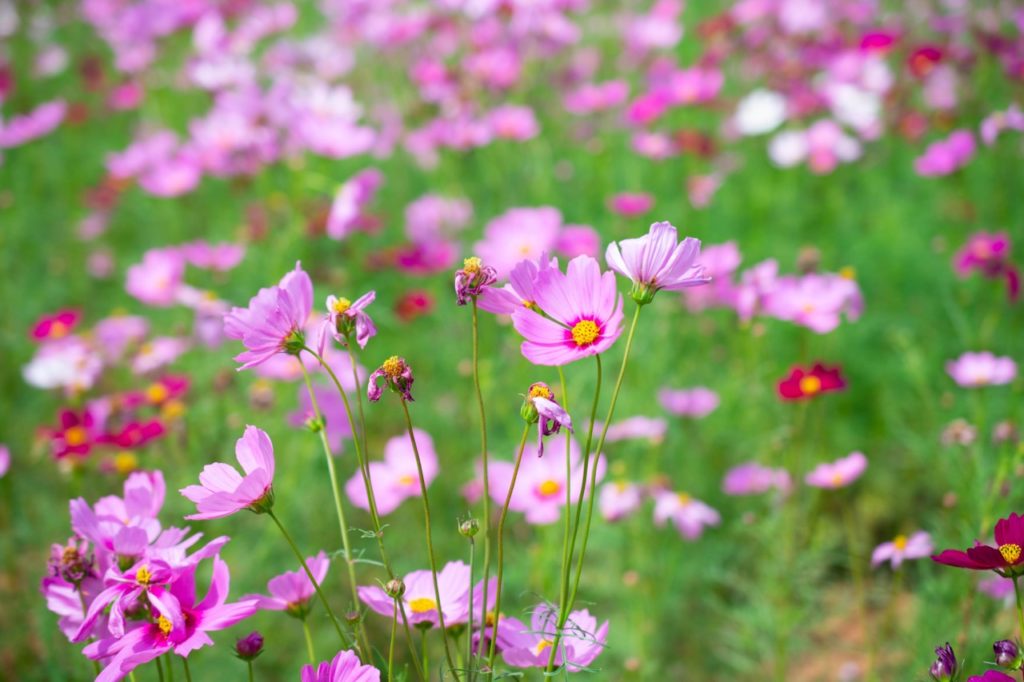
- BOTANICAL NAME: Cosmos bipinnatus
- HARDINESS RATING: H3
- PLANT TYPE: annual
- FLOWERS: pink and white
- FLOWERING SEASON(S): summer / autumn
Another frost-tender annual, cosmea produces dainty pink and white blooms that grow on stems up to 2 metres tall in the late summer and autumn.
These plants are easy to grow from seed, as long as they are grown in a site where they will receive full sun, and can be planted out in June for autumn blooms.
Cosmos are a great plant for pollinators, so if you’re looking for annuals that will benefit the wildlife near you, this is a great pick.
“If your plants are tall when planting, cutting back by a third encourages them to bush out and produce a mound of blooms,” shares Horticultural Consultant Peter Lickorish.
3) Hyacinth Bean
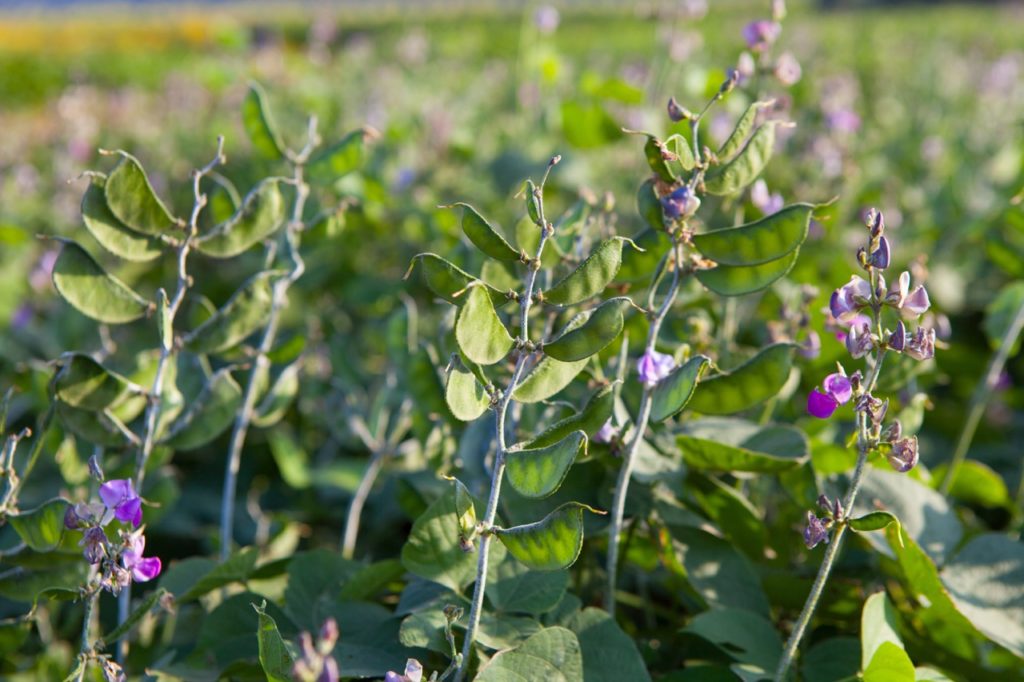
- BOTANICAL NAME: Lablab purpureus
- HARDINESS RATING: H1C
- PLANT TYPE: perennial / climber
- FLOWERS: purple and white
- FLOWERING SEASON(S): summer / autumn
A unique perennial, Lablab purpureus bears white and purple pea-like blooms from August when planted in June.
More commonly referred to as the hyacinth bean, this climbing perennial should be grown indoors in the UK for the majority of the year, as any cold weather will damage the plant, especially if sown directly into the ground.
If you still want to enjoy these blooms in your garden the following year, I’d recommend planting hyacinth beans in pots so you can easily move them to a warmer location after the summer months.
4) Common Foxglove
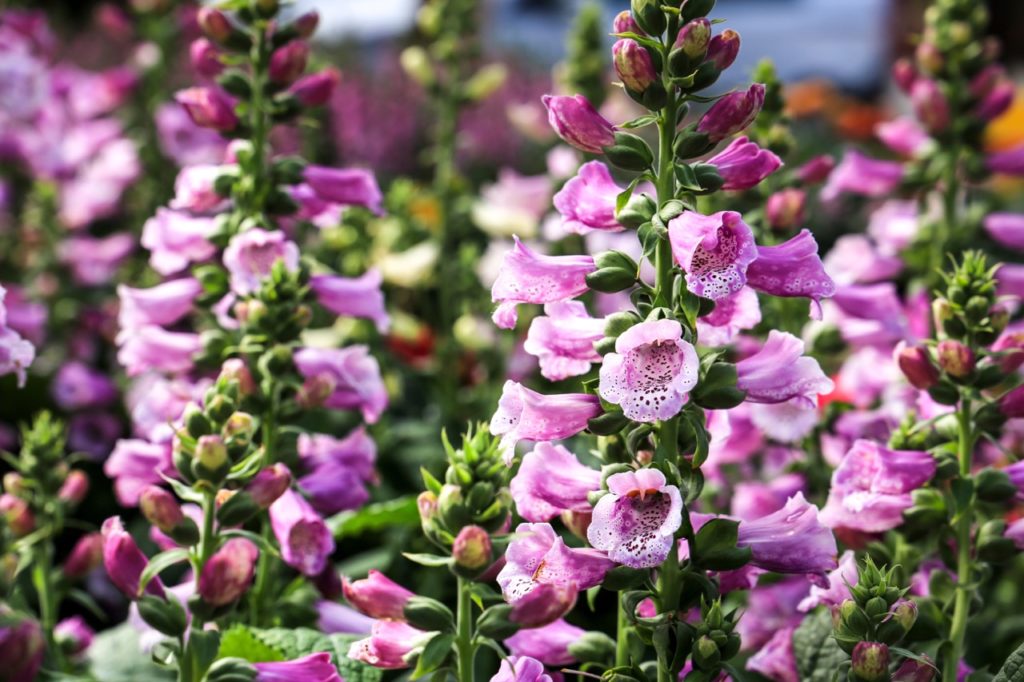
- BOTANICAL NAME: Digitalis purpurea
- HARDINESS RATING: H7
- PLANT TYPE: biennial
- FLOWERS: purple
- FLOWERING SEASON(S): summer
Foxglove is a popular flower for wildlife gardens, as bees and butterflies love the beautiful, tubular purple flowers they share in the late summer months.
Provided you are not growing from seed, you can plant foxglove in June for flowers that will appear the same year in most locations.
If you’re growing them from seed, you will need to wait until the following year for them to flower, due to their two-year lifecycle.
I personally think this biennial looks wonderful when planted out in a wildflower meadow with other low-maintenance flowering plants.
5) Poached Egg Flower
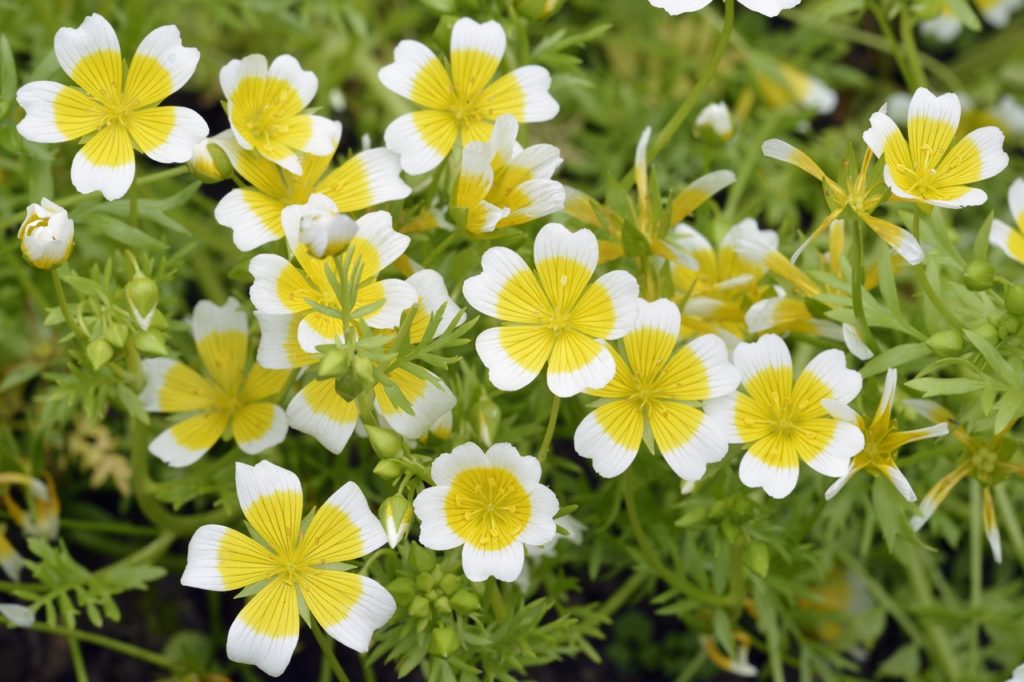
- BOTANICAL NAME: Limnanthes douglasii
- HARDINESS RATING: H5
- PLANT TYPE: annual
- FLOWERS: white and yellow
- FLOWERING SEASON(S): summer / autumn
One of my favourite annuals on this list, the poached egg flower is a hardy annual that produces bowl-shaped flowers with white tips and a yellow centre.
When grown in full sun, Limnanthes douglasii produces flowers from late summer right up until the first frosts.
Plant this annual in your flower borders or beds or in mixed annual container displays for beautiful results.
“If combined with lots of other plants, keep it near the front of a bed to let this diminutive plant shine,” suggests Peter.
“Once sown, it may freely self-seed to form a frothy ground-cover carpet.”
6) Jasmine Tobacco
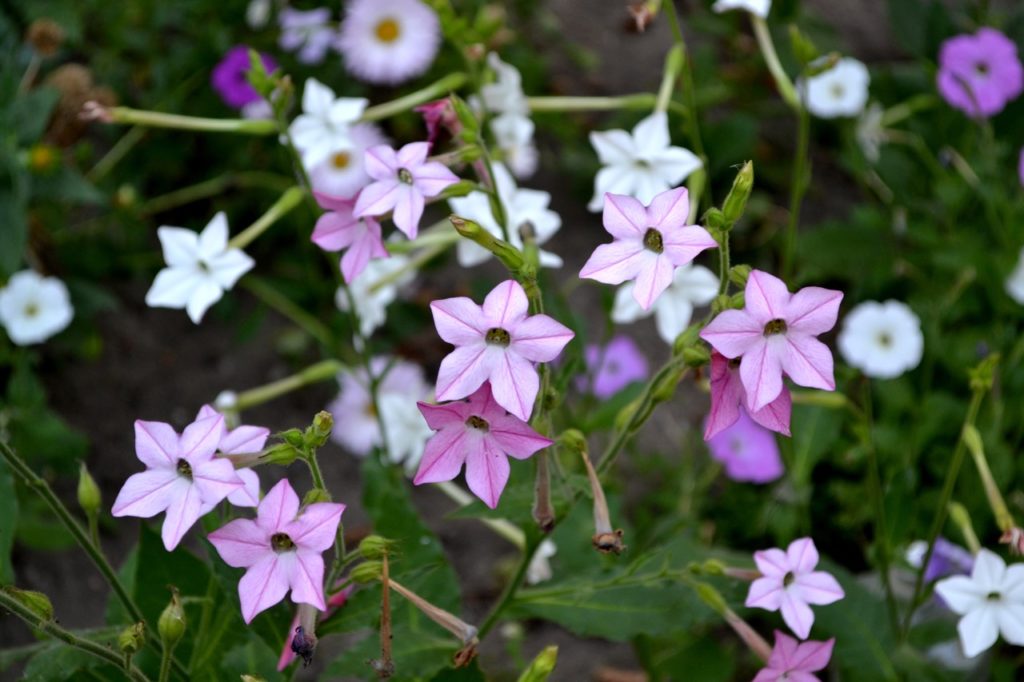
- BOTANICAL NAME: Nicotiana alata
- HARDINESS RATING: H3
- PLANT TYPE: perennial
- FLOWERS: pink, green and yellow
- FLOWERING SEASON(S): summer / autumn
Beloved by pollinators, jasmine tobacco produces beautifully scented star-shaped blooms from August when sown in June.
This plant can reach up to 1.5m in height and is best grown in a sheltered position where it can be protected from strong winds.
A short-lived perennial, you can use jasmine tobacco as a bedding plant or your flower borders or beds.
7) Sunflower
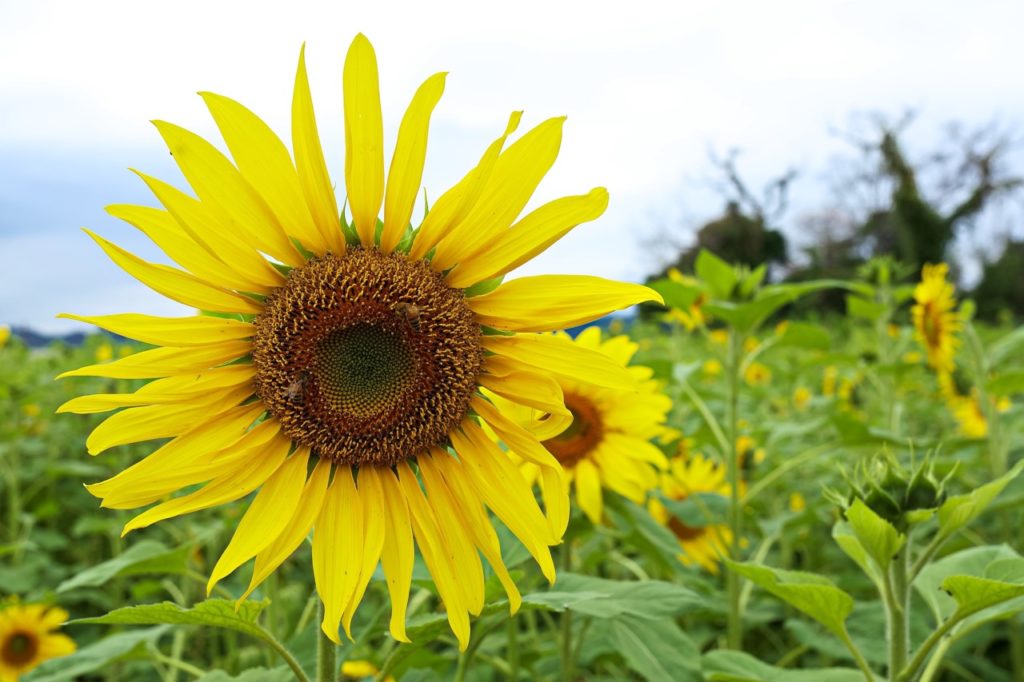
- BOTANICAL NAME: Helianthus annuus
- HARDINESS RATING: H4
- PLANT TYPE: annual
- FLOWERS: brown and yellow
- FLOWERING SEASON(S): summer
June is not too late to plant sunflower seeds in your garden.
In fact, it’s a great time to do it, as any cold weather should have completely passed!
Growing up to a huge 4m in height (if sown early enough) I think sunflowers look best planted in a garden border or against a wall.
Make sure you are correctly supporting your sunflowers so that there is no risk of their stems getting damaged – this is one of the most common ways in which sunflowers can fail to flower.
8) Blue Eryngo
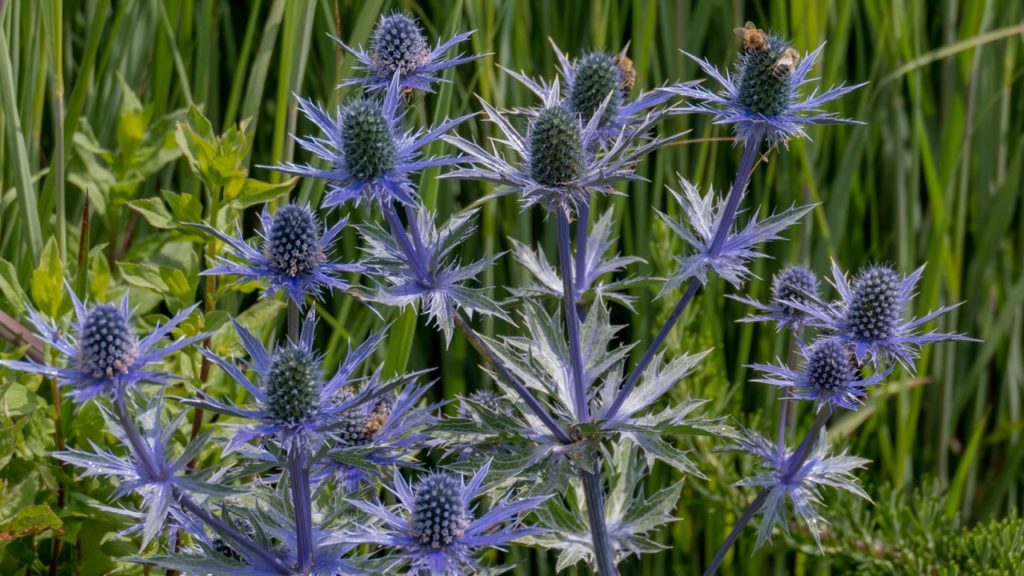
- BOTANICAL NAME: Eryngium planum
- HARDINESS RATING: H5
- PLANT TYPE: perennial
- FLOWERS: blue
- FLOWERING SEASON(S): summer / autumn
With unusual blue stems, spiky silvery leaves and clusters of tiny flowers that are surrounded by blue spiny bracts, blue eryngo is a great choice for the avant-garde gardener.
This perennial will flower from August when planted out in June and can produce impressive blooms year after year.
Blue eryngo needs to be planted in a sheltered position where it will receive full sun, and will look great in a traditional cottage garden planting scheme.
“One of my favourite things about this plant is that it’s one of few plants which can be propagated by root cuttings in winter,” shares Peter.
“Young plants produced this way may be ready for life in the big wide border by June.”
9) Dyer’s Tickseed
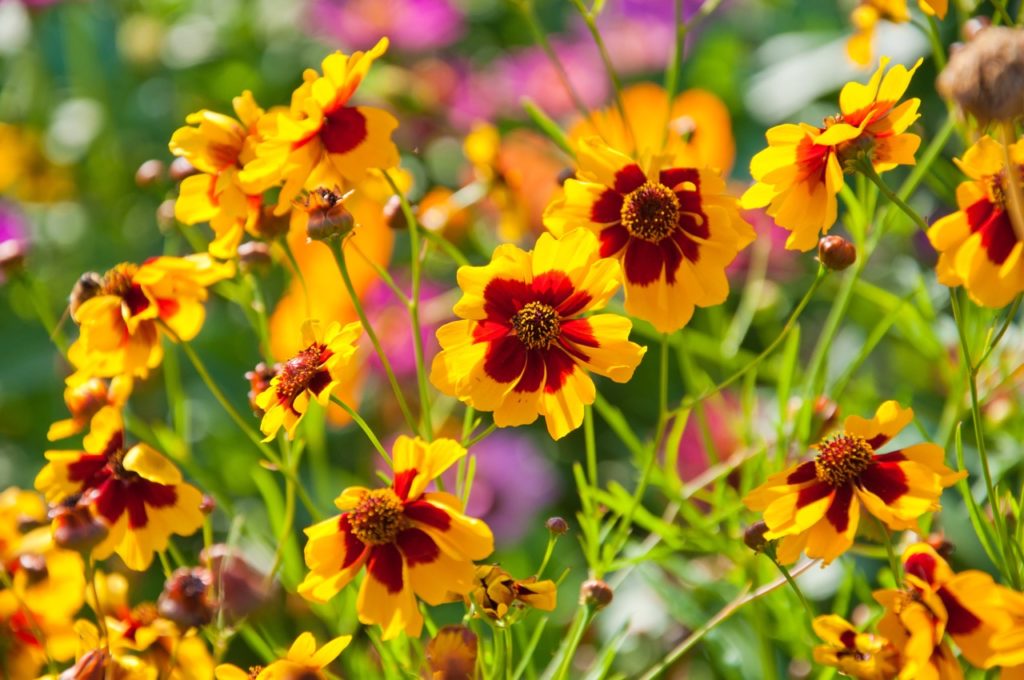
- BOTANICAL NAME: Coreopsis tinctoria
- HARDINESS RATING: H6
- PLANT TYPE: annual
- FLOWERS: red and yellow
- FLOWERING SEASON(S): summer / autumn
Dyer’s tickseed is an annual that produces lovely red and yellow flowers in the late summer and autumn when planted out in June.
It is a great choice for pollinators and wildlife-friendly gardens and also for growing in a wildflower meadow, as it is a relatively unfussy plant.
You can also make use of the cut flowers in displays around your home, but I’d recommend letting them grow naturally so the bees can make use of them whilst they are in flower.
10) Orange Daylily

- BOTANICAL NAME: Hemerocallis fulva
- HARDINESS RATING: H7
- PLANT TYPE: perennial
- FLOWERS: orange and red
- FLOWERING SEASON(S): summer
Daylilies are great for June planting as they can become fully established over the winter months and then produce beautiful flowers the following summer.
The orange daylily is no exception to this and will grow happily in most conditions year-round.
This unfussy perennial will look great when planted with other perennials in a flower bed or can also be used for cottage garden planting.
11) Cardinal Flower
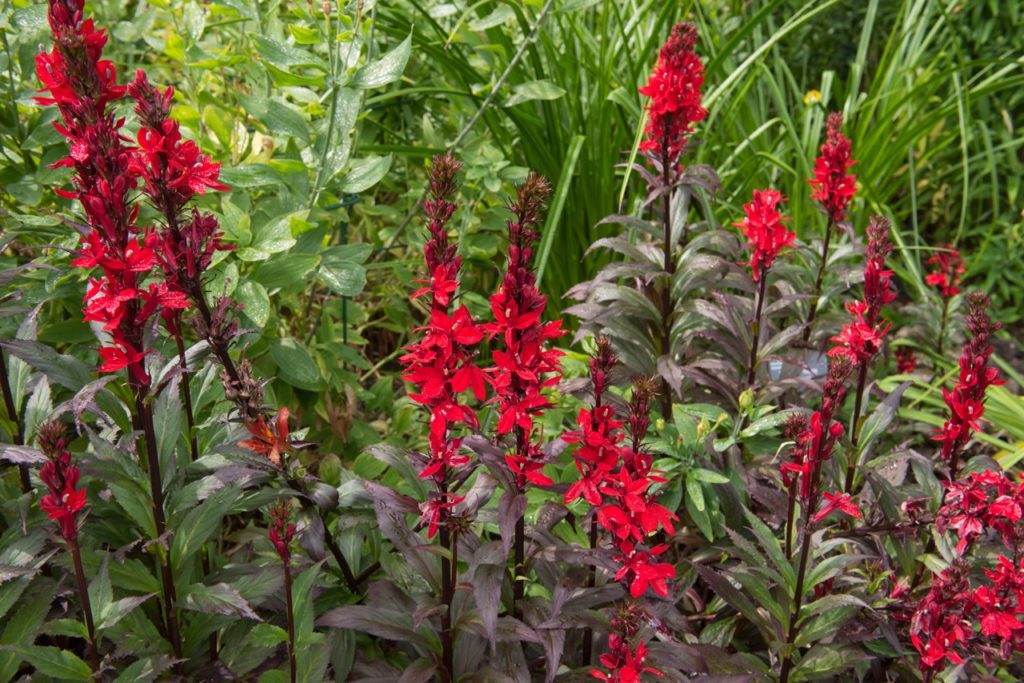
- BOTANICAL NAME: Lobelia cardinalis
- HARDINESS RATING: H3
- PLANT TYPE: perennial
- FLOWERS: red
- FLOWERING SEASON(S): summer / autumn
Cardinal flowers are one of my favourite plants for autumn flowering, as their deep red blooms look stunning against the fading autumn foliage of many other plants.
However, they can be difficult to grow in a garden, since they love poorly-drained, loamy soil and will not grow well if these conditions are not met.
So, if you have a pond or a patch of soil in your garden that tends to get waterlogged, these beautiful perennials will help to brighten those spaces.
“Though they love moisture in summer, too much winter wet can kill these garden divas off, so consider lifting and potting over winter,” Peter advises.
12) Primrose Candelabra Hybrids
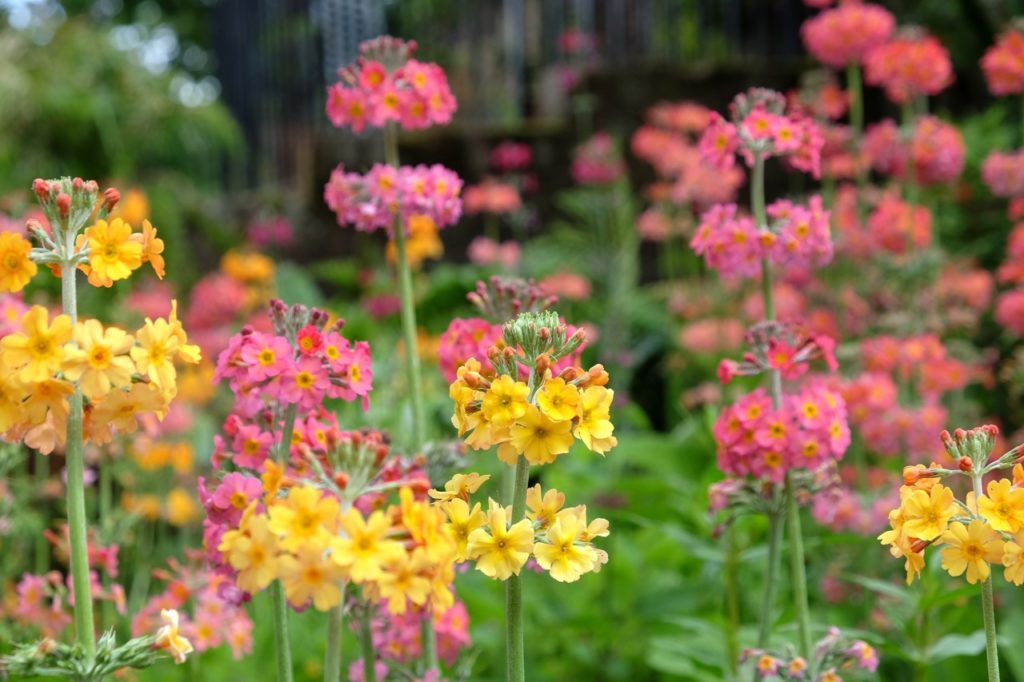
- BOTANICAL NAME: Primula Candelabra hybrids
- HARDINESS RATING: H5
- PLANT TYPE: perennial
- FLOWERS: varies
- FLOWERING SEASON(S): spring / summer
Producing small flowers in a range of different colours from bright orange to creamy yellow, candelabra primula hybrids are great for planting out in June for flowers the following spring.
Preferring moist, acidic soil with a mix of clay or loam, these flowers are perfect if you are growing in garden soil that has an acidic pH.
13) False Bishop’s Weed

- BOTANICAL NAME: Ammi majus
- HARDINESS RATING: H6
- PLANT TYPE: annual
- FLOWERS: white
- FLOWERING SEASON(S): summer
Ammi majus, often referred to as ‘false bishop’s weed’, is a hardy annual that produces lovely clusters of white flowers in the summer after planting.
I love this plant – it is relatively unfussy about its conditions and its flowering umbels bring a bright, airy look to flower beds.
Try growing Ammi majus from seed in a wildflower meadow display with other annuals for a beautiful summer-flowering spectacle.
14) Blanketflower
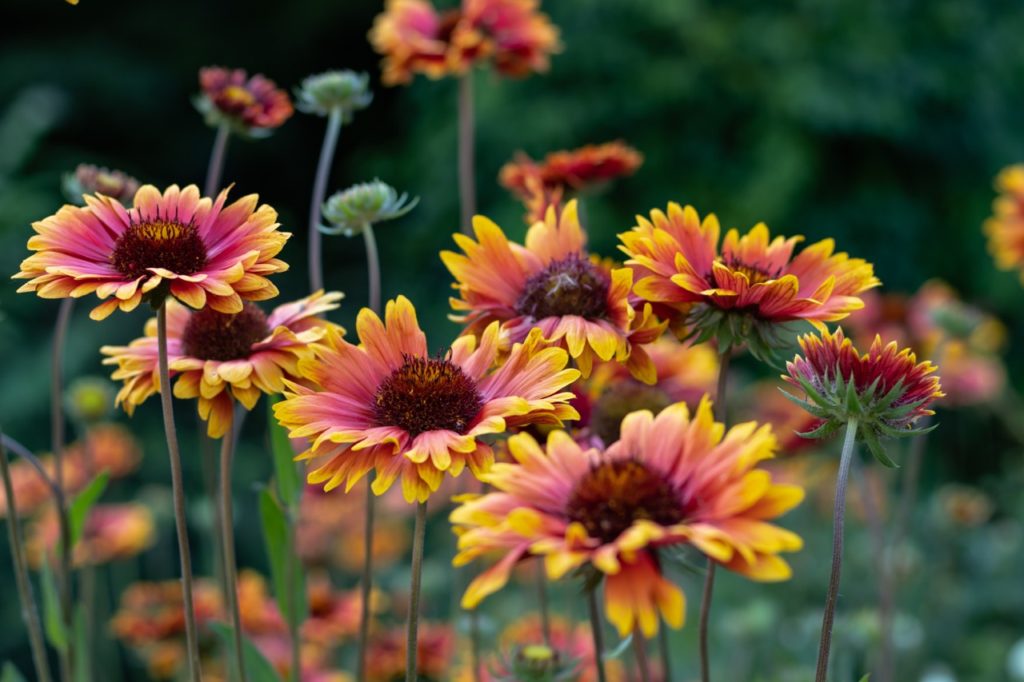
- BOTANICAL NAME: Gaillardia
- HARDINESS RATING: H4
- PLANT TYPE: perennial
- FLOWERS: red and yellow
- FLOWERING SEASON(S): summer / autumn
Gaillardia is a lovely perennial that has frilly, daisy-like red and yellow flowers that can be seen as early as September when planted in June.
As a half-hardy plant, you might need to keep an eye on these perennials over the cooler months of the year, and they will benefit from protective measures such as a layer of mulch placed around their stems in the winter.
15) Dahlia

- BOTANICAL NAME: dahlia
- HARDINESS RATING: varies
- PLANT TYPE: perennial
- FLOWERS: varies
- FLOWERING SEASON(S): summer
Dahlias are stunning herbaceous perennials that are commonly grown for their showy flowers that bloom throughout the summer.
There are cultivars in a multitude of colours and there are so many brilliant varieties that I couldn’t pick just one for this list.
If you’re interested in planting dahlias in June, try ‘Waltzing Mathilda’, ‘Café au Lait’ or ‘Arabian Night’ for flowers that will not only delight you and your visitors, but the former will be adored by local pollinators too!
16) Greater Masterwort
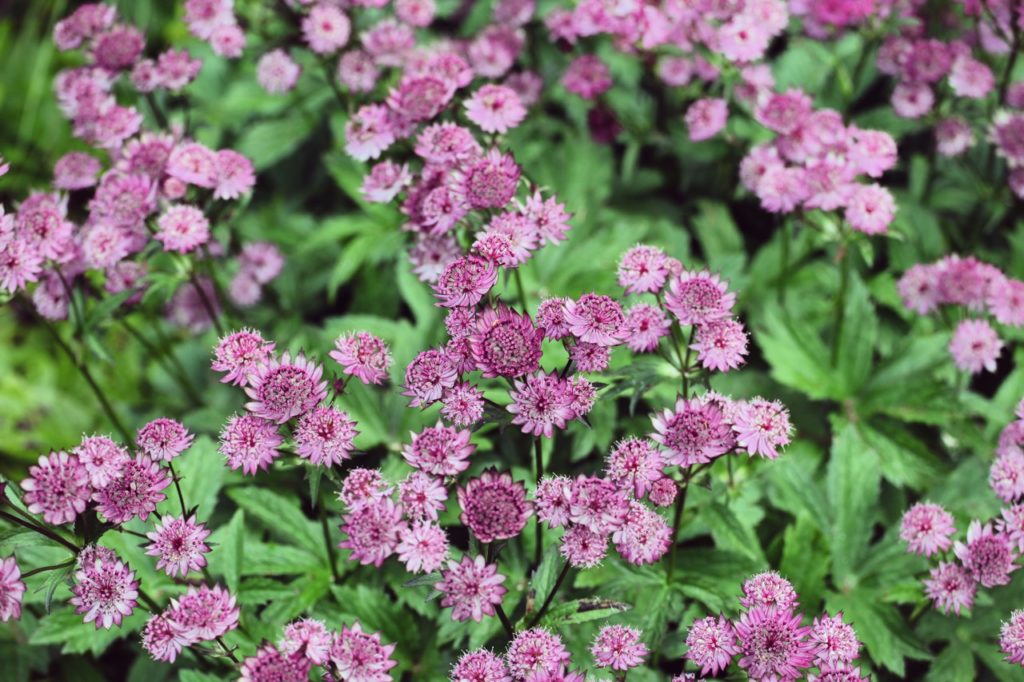
- BOTANICAL NAME: Astrantia major
- HARDINESS RATING: H7
- PLANT TYPE: perennial
- FLOWERS: pink, green and white
- FLOWERING SEASON(S): summer
The greater masterwort produces lots of tiny pink and white bracts that look like petals, creating bundles of flower-like heads that grow from stems that are usually around 60cm tall.
If planted in June, this will give this perennial time to develop over autumn and winter so it can burst into colour the following year.
Given its tolerance of light shade, you can use this plant to underplant large shrubs or other flowers – including on the edge of garden beds and herbaceous borders.
17) African Marigold
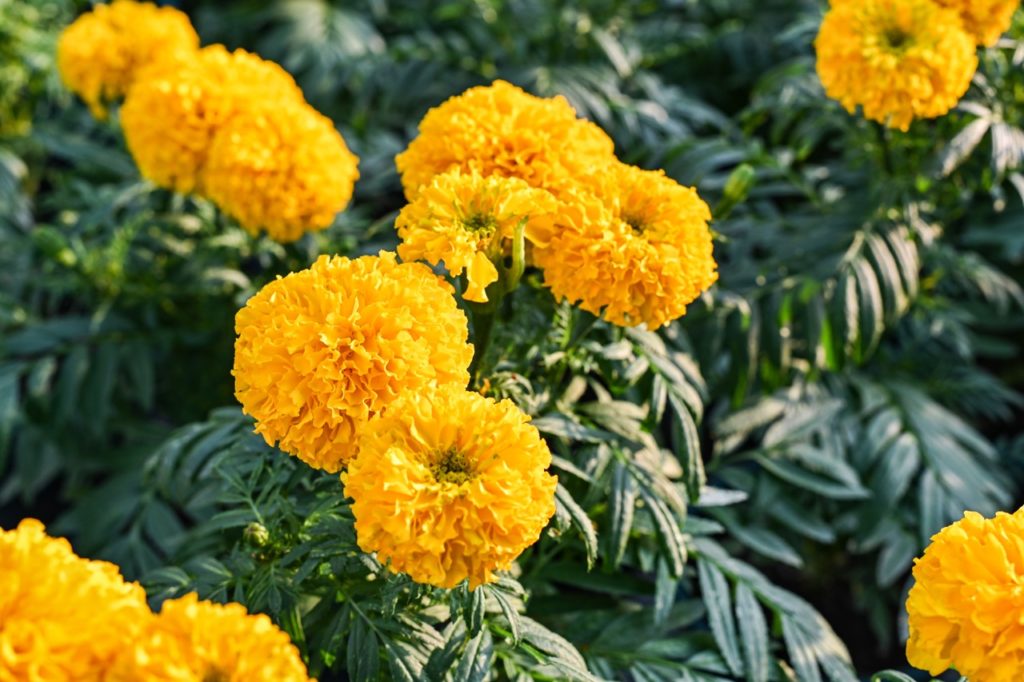
- BOTANICAL NAME: Tagetes erecta
- HARDINESS RATING: H2
- PLANT TYPE: annual
- FLOWERS: yellow, orange and white
- FLOWERING SEASON(S): summer / autumn
A frost-tender annual, the African marigold produces glorious double flowers that can be orange, white or yellow in colour.
An easy-to-care-for plant once established, these blooms are suited to cottage gardens or for their own potted displays.
Marigolds are often used as companion plants because of their ability to attract and ‘trap’ pest species in the garden.
However, I’d recommend growing these plants next to paths or doorways so you can enjoy their fragrant flowers and foliage during their flowering season.
18) Christmas Rose
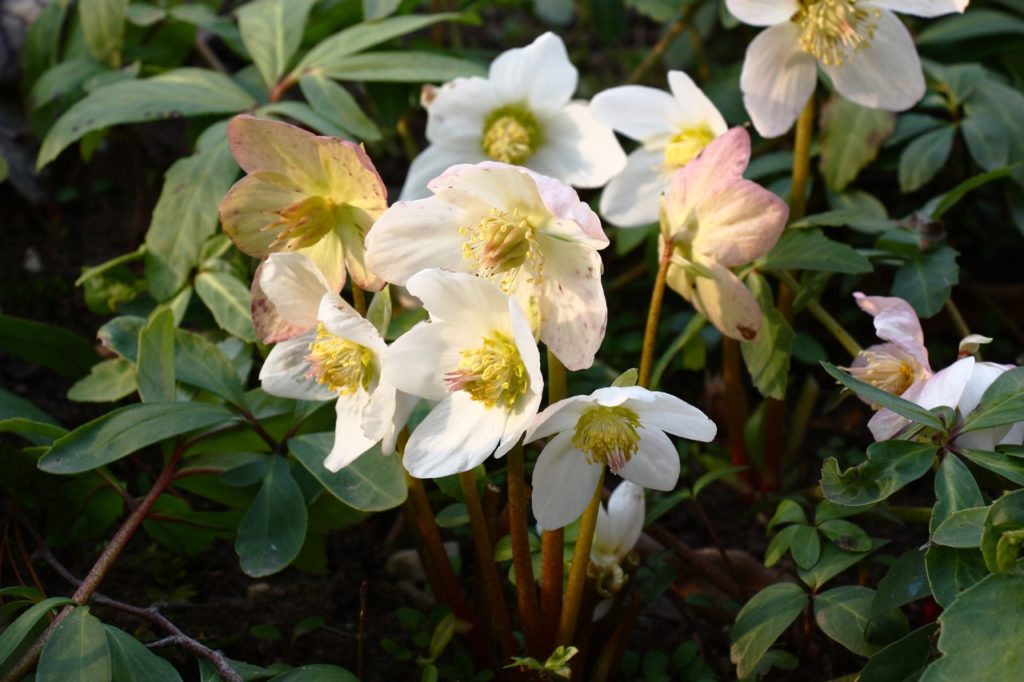
- BOTANICAL NAME: Helleborus niger
- HARDINESS RATING: H7
- PLANT TYPE: perennial
- FLOWERS: pink and white
- FLOWERING SEASON(S): winter / spring
A seasonal classic to conclude these June-planting flowers, the Christmas rose is a delightful, fully hardy perennial that can be planted in early summer for flowers in the following winter.
Producing gorgeous bowl-shaped flowers with white petals tinged in pink, Helleborus niger needs to be grown in part shade in a sheltered location.
Try growing this plant underneath large shrubs or in flower borders with other shade-loving perennials.

